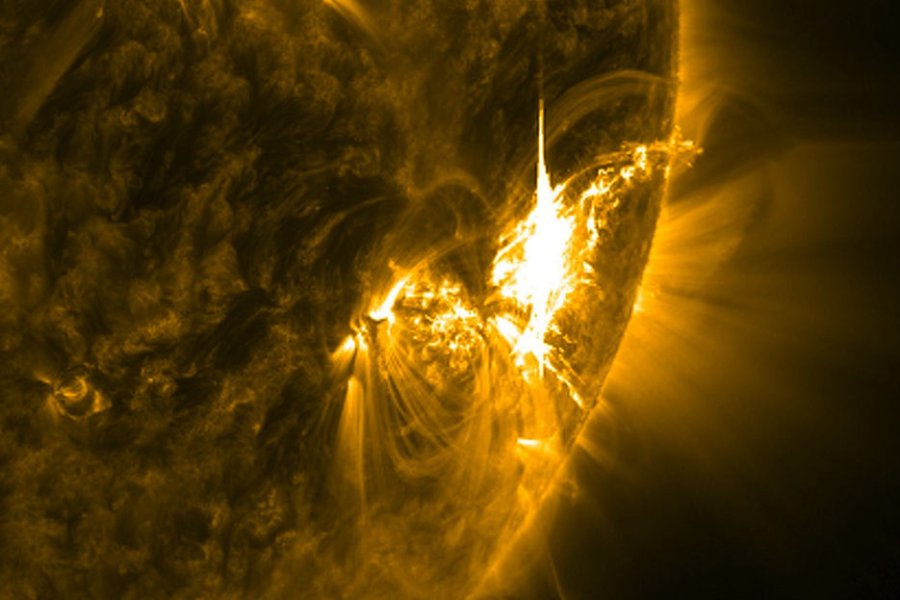Nov. 5 (UPI) — A moderate solar flare might affect radio communications on Earth Wednesday after a pair of powerful solar flares disrupted radio communications in sunlit areas of the globe this week, the National Oceanic and Atmospheric Administration said.
NOAA’s Space Weather Prediction Center said it recorded a moderate solar flare at 6:19 a.m. EST Wednesday from the sun’s AR 4274 region, but it is weaker than the two reported on Tuesday.
Wednesday’s solar flare has produced a partial halo coronal mass ejection that might “have some Earth-directed component to it,” the SWPC said.
“This CME is currently under analysis to determine any Earth-directed threat and, if so, what level of geomagnetic response we might anticipate,” the center added.
Two larger solar flares on Tuesday disrupted radio communications in North and South America and from the North Pacific Ocean to Australia.
The first occurred at 12:34 p.m. EST from sunspot AR4274, which disrupted radio communications in most sunlit areas of North and South America, according to Space.com.
A second solar flare occurred at 5:02 p.m. from a hidden area of the sun’s southeastern region and was weaker than the first.
That flare caused a radio blackout across sunlit areas of the North Pacific Ocean to New Zealand and some of eastern Australia.
Each solar flare released large plumes of magnetized plasma called coronal mass ejections that are not headed toward Earth, but their outer edges could interact with a solar wind that is moving fast and is predicted to cause geomagnetic storm conditions on Thursday and Friday.
A solar flare is a large eruption of electromagnetic radiation from the sun and can last several minutes up to several hours.
The sudden burst of electromagnetic energy travels at the speed of light and affects sunlit areas on Earth almost immediately upon eruption.
Such solar storms can produce more vibrant auroras during the nighttime hours, according to Space.com.

